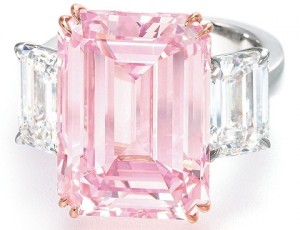Big Three Are Back?! Chrysler Takes Third as Shortages Hurt Japanese Makers
Tuesday, August 9, 2011 by admin
Toyota, Honda and Nissan inventory shortages pushed Chrysler up to third-bestseller in the U.S. for the first time since anyone could remember. Toyota says it will be up to full production by the end of July. Subaru and Mazda fell as well, to 12th and 13th. If Hyundai and Kia were allowed to combine their sales numbers, they would make the fifth-largest automaker in the U.S. last month, behind Toyota and ahead of Honda and Nissan. Even on its own, Hyundai is gaining on Nissan.

Both Ford and GM say they’ve been gaining in places like California even before the Japanese earthquake and tsunami in March.
A reporter for The Los Angeles Times told GM that the average Chevy Cruze buyer would save $300 by waiting to buy the car Friday, instead of Thursday. At Toyota, sales chiefs and analysts figure the new tax/fee structure didn’t make any difference, though Californians able to get their hands on a new Prius or Camry probably were happy to pay close to sticker, anyway.
Both Ford and GM report strong truck sales, even with GM’s excess pickup inventory. Ford sold nearly 50,000 F-Series and says its EcoBoost V-6 is a runaway success in the F-150. GM says its extended pickup assembly plant shutdowns scheduled for later this summer will lower its 122-day supply to 100-110 days. Ford says it has a 79-day supply of F-Series.
Full-size pickups’ share of the market rose from 9.3 percent in April to about 10 percent in May and more than 11 percent for the first three weeks in June, Pipas said. That’s still well below the heady 14-15 percent of the days of 17-million annual sales, though both Ford and GM figure healthy truck sales show a relatively healthy economy. Pickups are selling to workers who are doing repairs and upgrades to existing homes, rather than building new ones, GM theorizes. Chrysler, which hasn’t held a monthly sales conference call since about the time of its bankruptcy, has sold 111,000 Ram pickups so far this year.
On the other end of the spectrum, gas prices have affected car sales. We’re not downsizing that much, however. For the first half of the year, the five-bestselling midsize cars totaled 654,098, compared with 588,615 for the top five compacts. B-segment cars are nowhere nearly as popular, as many of them can’t match the best mileage of the c-cars.
At GM, Chevy says 17 percent of Cruzes sold last month were of the ECO model, up from 15 percent in May, but only because ECO production started late and production is ramping up. Good news for us stick-shift proponents, though. Year-to-date, the manual take rate on the Chevy Cruze Eco is 48 percent. On the Cruze LS, the only other model available with three pedals, it’s 15 percent. Unlike most other cars, there’s still an mpg advantage to buying the ECO manual; it gets 28/42 mpg EPA versus 26/37 mpg for the automatic.



































